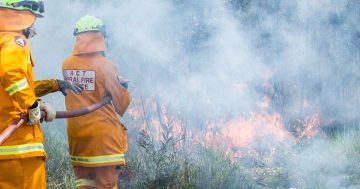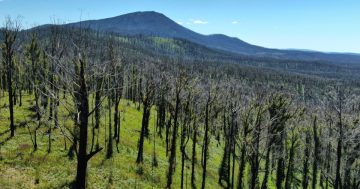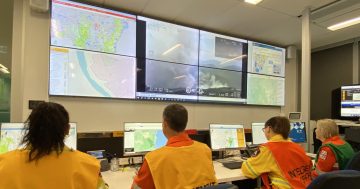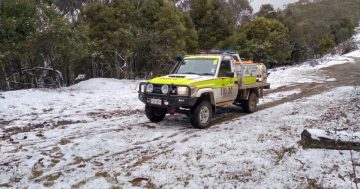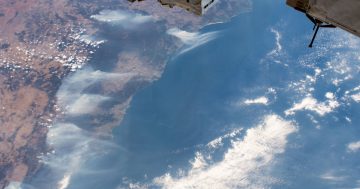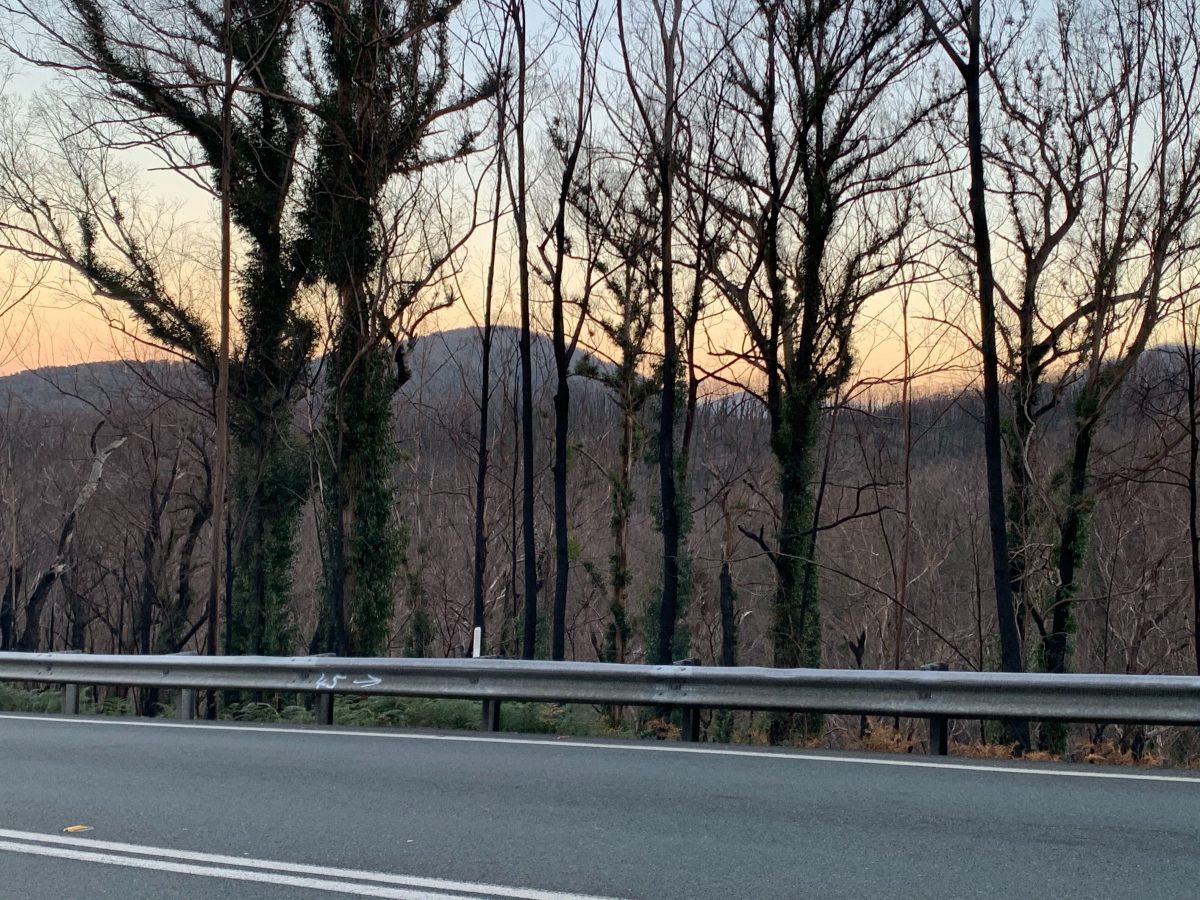
Devastation brought by the Black Summer bushfires on Clyde Mountain in NSW. Photo: Kim Treasure.
You may assume hot weather drives fire danger, but a group of researchers suggests cold fronts may play a bigger role than previously realised.
Researchers from the University of New South Wales Canberra (UNSW Canberra) and the Australian National University studied the impact of cold fronts in south-east Australia on the Black Summer bushfires of 2019/20.
They found 23 of the 50 large-fire days (or 46 per cent) during Black Summer coincided with cold fronts passing over south-east Australia.
Professor of Bushfire Dynamics at UNSW Canberra Jason Sharples, who was one of the study’s co-authors, said that while some results had been expected, others had not.
“It’s important to point out that there’s been a link between cold fronts and bushfires that’s been established in isolated, individual events, like Ash Wednesday [in 1983],” he said.
“But the novelty of the research was to show that the cold fronts had this persistent effect over the whole season during the Black Summer fires.”
While it might sound strange that they can exacerbate bushfires, cold fronts tend to bring hot and dry winds from central Australia.
This can dry out fuel sources and lead to more dangerous fire conditions.
Professor Sharples said the passage of cold fronts could also result in winds strengthening and changing direction, leading to erratic fire behaviour.
In their article, the researchers argue that longer-term factors such as climate change and drought from 2017 to 2020 combined with the effects of the cold fronts to drive the devastation of the Black Summer bushfires.
Professor Sharples said the observed cold fronts also fell into a longer-term pattern of how cold fronts had changed since the 1950s.
“They’ve become more frequent and more intense over a fair chunk of the south-east – this was not really an unexpected thing to find, but something that just hadn’t been looked at before,” he said.
“There were a few particular regions where this increase happened, which was the Far North Coast of New South Wales, the Sydney basin and areas to the south of it, and the area around the New South Wales-Victoria border.
“A lot of those Black Summer bushfires were occurring in places that we identified in our study as having been particularly impacted by these cold fronts coming through.”
Professor Sharples said the Foehn effect had also contributed to the fuel dryness east of the Great Dividing Range during the Black Summer period.
“With the Foehn effect, what happens is the mountains will block cooler and moister winds and allow warmer and drier air to flow in from higher altitudes and accelerate down the lee slope [the side away from the wind] of the mountains,” he said.
“What you end up with is warmer and drier conditions and stronger winds on the lee side of the mountains, which is basically the coastal fringe of the South Coast.
“And as soon as you get those hotter and drier conditions, that’s obviously bad for fire conditions.”
Professor Sharples said he hoped the study would guide planning and resource distribution as governments and other organisations responded to bushfire risk.
“I think it comes down to being very careful that you account for the worst possible conditions when you assess the risk of fire in a particular region,” he said.
“This study really says that there are these other additional effects that we probably need to consider a bit more, rather than just looking at the broad-scale fire danger.”
He said that, should the pattern of more intense and more frequent cold fronts continue, people and communities would likely be affected as a result.
“These are conditions that these coastal areas are likely to experience most often,” he said.
“Having some regions be identified as being particularly prone flows through to how you have resources allocated and the different tactics that might be needed when you’re fighting these sorts of fires.”












